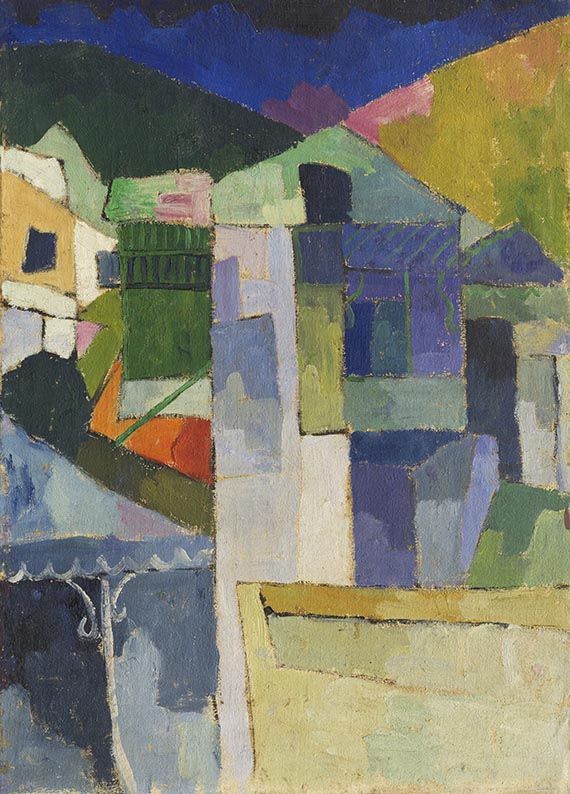Dictionary


International Gothic
Various names have been invented for the phenomenon of International Gothic, a style that blossomed in the courts of Europe around 1400.
It has been referred to as the "Soft Style"’ a term coined by Börger, and as the "Beautiful" or "Royal Style". All of these terms can be used as synonyms for a renewal of the arts, which had its origins in Franco-Flemish book illuminations and the realist achievements of the Tuscan Trecento, and first took place in King Charles IV’s (1346-78) cultural centre of Prague. The epoch didn’t last long – beginning in circa 1380/90 and lasting until 1420/30. It remained a significant period in art history - marking the end of the Gothic era and the transition into the Renaissance.
The Soft Style was characterised by a new liveliness and flowing formal dynamism. From circa 1400, as a reaction to the statuary, strict rigidity and body-hugging heaviness dominating art at the end of the 14th century, figures were depicted with extended limbs, in elegant movement. Characteristic of the style were the stretched, extended S-Shaped body and radiant faces. Lyrical, and transfigured expressions, ornamental playfulness, and grace dominated the works of the International Gothic.
Exemplary works of the epoch include the so-called "Beautiful Madonna'" graceful statues of Mary and child.
The leading representatives of the Soft Style include masters of Franco-Flemish book illuminations such as Melchior Broederlam, the Brothers Limburg, the Boucicaut Master and Jacquemart de Hesdin, and to a lesser extent, the sculptor Claus Sluter. Other exponents were Peter Parler (1330 or 1333-99) in Prague, and in Germany, masters such as Francke and Conrad von Soest, in Italy Stefano da Verona, or Gentile da Fabriano. The work of Lorenzo Ghiberti (c. 1378-1455) can also be partially attributed to the International Gothic.
Various names have been invented for the phenomenon of International Gothic, a style that blossomed in the courts of Europe around 1400.
It has been referred to as the "Soft Style"’ a term coined by Börger, and as the "Beautiful" or "Royal Style". All of these terms can be used as synonyms for a renewal of the arts, which had its origins in Franco-Flemish book illuminations and the realist achievements of the Tuscan Trecento, and first took place in King Charles IV’s (1346-78) cultural centre of Prague. The epoch didn’t last long – beginning in circa 1380/90 and lasting until 1420/30. It remained a significant period in art history - marking the end of the Gothic era and the transition into the Renaissance.
The Soft Style was characterised by a new liveliness and flowing formal dynamism. From circa 1400, as a reaction to the statuary, strict rigidity and body-hugging heaviness dominating art at the end of the 14th century, figures were depicted with extended limbs, in elegant movement. Characteristic of the style were the stretched, extended S-Shaped body and radiant faces. Lyrical, and transfigured expressions, ornamental playfulness, and grace dominated the works of the International Gothic.
Exemplary works of the epoch include the so-called "Beautiful Madonna'" graceful statues of Mary and child.
The leading representatives of the Soft Style include masters of Franco-Flemish book illuminations such as Melchior Broederlam, the Brothers Limburg, the Boucicaut Master and Jacquemart de Hesdin, and to a lesser extent, the sculptor Claus Sluter. Other exponents were Peter Parler (1330 or 1333-99) in Prague, and in Germany, masters such as Francke and Conrad von Soest, in Italy Stefano da Verona, or Gentile da Fabriano. The work of Lorenzo Ghiberti (c. 1378-1455) can also be partially attributed to the International Gothic.
Offers
Headquarters
Joseph-Wild-Str. 18
81829 Munich
Phone: +49 89 55 244-0
Fax: +49 89 55 244-177
info@kettererkunst.de
Louisa von Saucken / Undine Schleifer
Holstenwall 5
20355 Hamburg
Phone: +49 40 37 49 61-0
Fax: +49 40 37 49 61-66
infohamburg@kettererkunst.de
Dr. Simone Wiechers / Nane Schlage
Fasanenstr. 70
10719 Berlin
Phone: +49 30 88 67 53-63
Fax: +49 30 88 67 56-43
infoberlin@kettererkunst.de
Cordula Lichtenberg
Gertrudenstraße 24-28
50667 Cologne
Phone: +49 221 510 908-15
infokoeln@kettererkunst.de
Hessen
Rhineland-Palatinate
Miriam Heß
Phone: +49 62 21 58 80-038
Fax: +49 62 21 58 80-595
infoheidelberg@kettererkunst.de
We will inform you in time.




